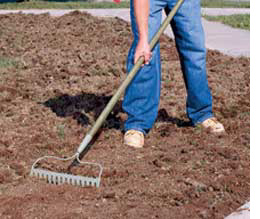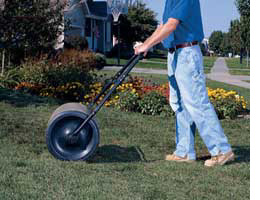How to lay instant lawn
For do-it-yourself homeowners, there are two ways to replant a lawn: the more familiar method of seeding and the alternative of laying instant lawn.
popular mechanic
If your lawn suffers from acute soil compaction, rampant weed problems, heavy thatch or organic matter deficiencies, you may want to remove the existing weeds and grass and start anew. It’s a big job but, like a new floor or roof, it will last a long time. For do-it-yourself homeowners, there are two ways to replant a lawn: the more familiar method of seeding and the alternative of laying instant lawn.
Seed or instant lawn
Seeding is less expensive and requires less work than laying instant lawn. But a newly seeded lawn needs long-term care, and there are fewer times during the year when you can seed. Instant lawn offers several advantages over seed. It looks good immediately and a lawn can be used much sooner than seeded lawns. Instant lawn is also better suited to sloping terrain where seed would be washed to low areas after the first hard rain.
Soil Preparation
Preparation, as with most home improvements, is the key to success and the toughest part of the job. If you want to replant a large lawn, you may want to tackle it in sections. Redo the worst or most visible areas first. Do other areas the following year. This keeps the job manageable and makes watering more feasible for homeowners who do not have in-ground sprinklers.
There are several ways to remove your existing lawn. Anyone with a strong back and a helper to cart away the old chunks of turf can remove a small lawn in an hour. But, for large lawns, try renting a sod cutter. It slices under the grass, enabling you to pull up strips of old turf. Make the job easier by doing it while the lawn soil is moist.
Rake the work area until it’s smooth.
Remove any stones and vegetative matter brought to the surface during tilling.
Once you’re satisfied, water the ground and check for puddles. When the soil dries enough to be worked, move soil from the high to the low spots.
Laying instant lawn
Before you begin, apply a starter fertilizer that’s high in phosphorus and lightly water the area.
Be prepared to go to work when your instant lawn is delivered, especially if it begins to heat up or dry out.
Have the lawn delivered to a shady spot and plan to install in one day.
Lay full strips around the entire perimeter of the area. Where borders are irregular, lay over the border and cut away excess later. Then work from the lowest point toward the house, laying the strips in a staggered pattern and cutting the ends to butt tightly against the perimeter strips. Trim excess with a sharp utility knife or a small mason’s trowel that has been sharpened on both sides with a metal file.
When fitting together two pieces of lawn at an angle, lay one piece over the other and cut through both at once. Lift the top piece and remove waste below. When you approach the opposite side, add one full row next to your perimeter pieces. Then, roll out the next to the last row and cut pieces to fit. Use an edging tool to trim any curved edges or places where the lawn meets other obstructions.




